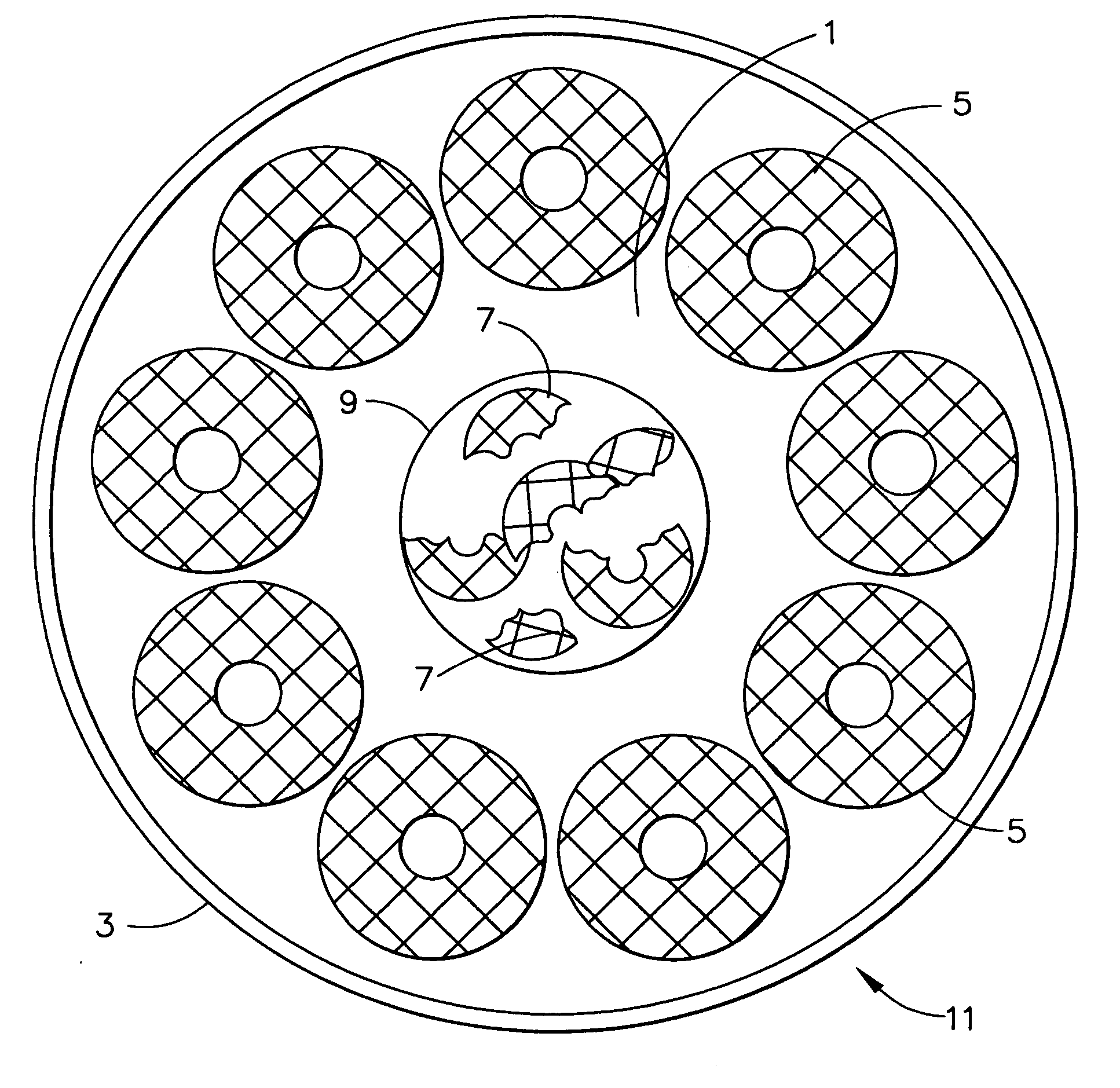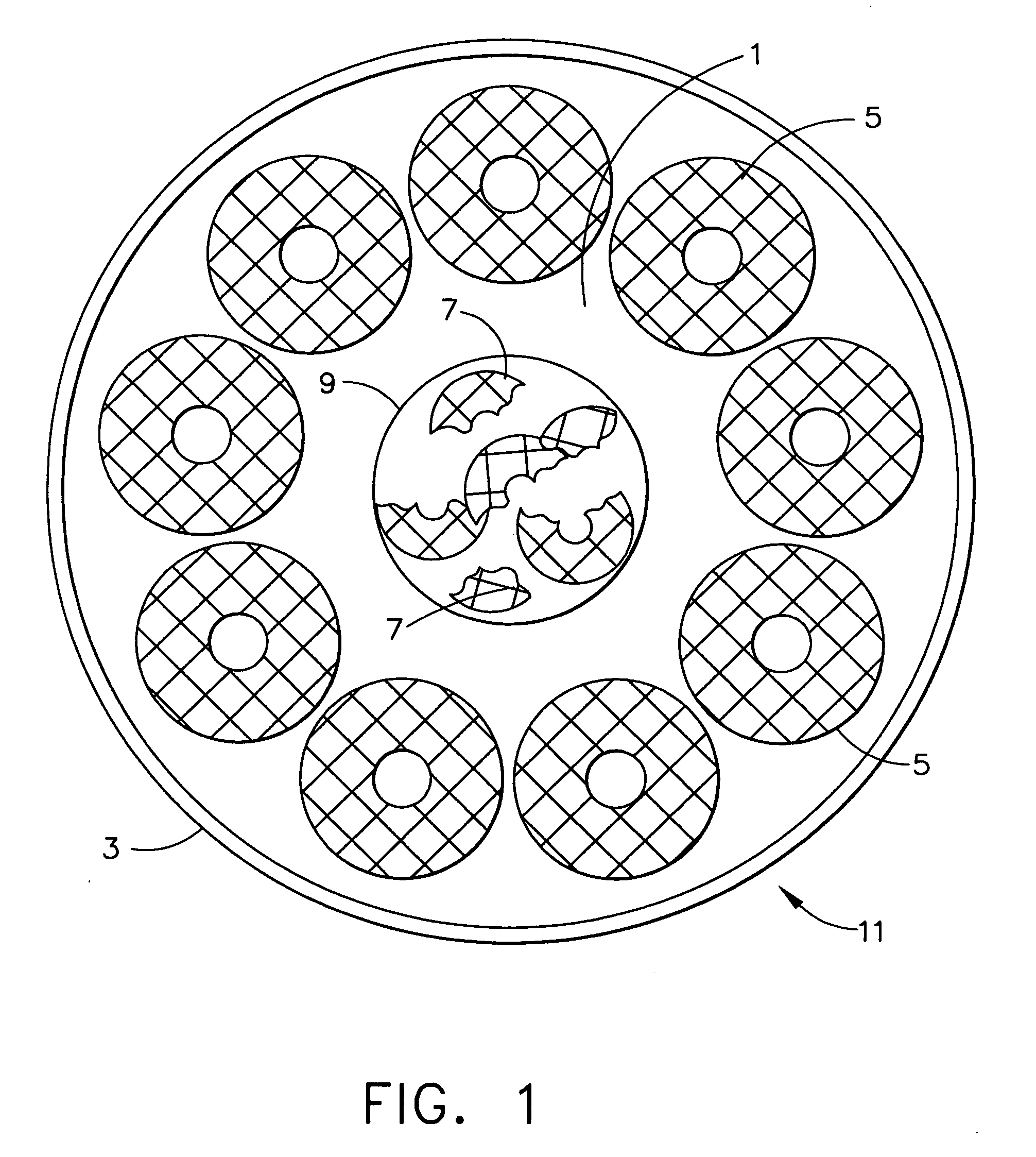Chemical vapor deposition apparatus and method
a technology of chemical vapor and vapor deposition, which is applied in the direction of transportation and packaging, coatings, layered products, etc., can solve the problems of additional correction cycles, inability to achieve many applications successfully, affecting cost and perhaps variability in friction performance of brakes, etc., and achieves greater and more uniform weight pickup and higher overall average density.
- Summary
- Abstract
- Description
- Claims
- Application Information
AI Technical Summary
Benefits of technology
Problems solved by technology
Method used
Image
Examples
Embodiment Construction
[0029] Densification. The apparatus of this invention is especially useful for carbon densification of annular porous structures used for high performance brake discs. The apparatus supports and positions a number of brake discs which are stacked on top of each other in a number of stacks. During the densification process, the apparatus and stacks of discs are enclosed in a furnace. Hot hydrocarbon gases are caused to flow around and through the stacks of brake discs, thereby depositing a carbon matrix within the interior regions and on the surface of the porous brake disc structures. The absolute gas pressure for the furnace is typically about 5-40 torr, the temperature range is typically about 950-1100° C., and the densification time is typically from 150 to 900 hours. A variety of different types of gas may be used. One may use for instance 100% natural gas. Natural gas typically comprises 92-96% methane, up to 5% ethane, up to 1% propane, up to 0.5% butane, and very small amount...
PUM
| Property | Measurement | Unit |
|---|---|---|
| mass | aaaaa | aaaaa |
| mass | aaaaa | aaaaa |
| thick | aaaaa | aaaaa |
Abstract
Description
Claims
Application Information
 Login to View More
Login to View More - R&D
- Intellectual Property
- Life Sciences
- Materials
- Tech Scout
- Unparalleled Data Quality
- Higher Quality Content
- 60% Fewer Hallucinations
Browse by: Latest US Patents, China's latest patents, Technical Efficacy Thesaurus, Application Domain, Technology Topic, Popular Technical Reports.
© 2025 PatSnap. All rights reserved.Legal|Privacy policy|Modern Slavery Act Transparency Statement|Sitemap|About US| Contact US: help@patsnap.com



